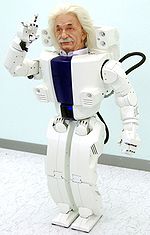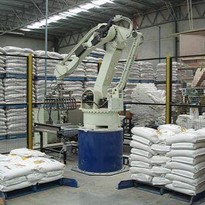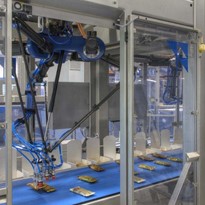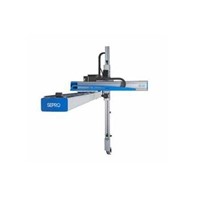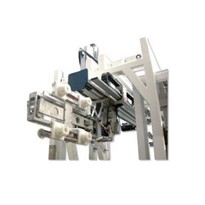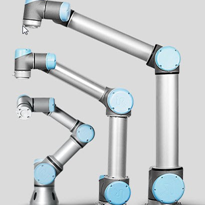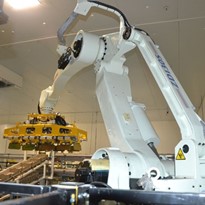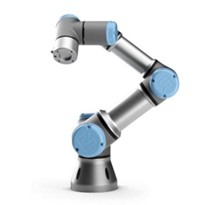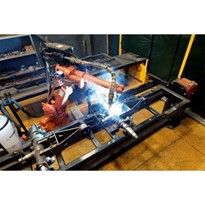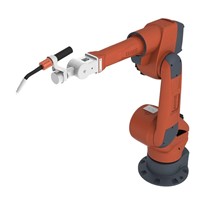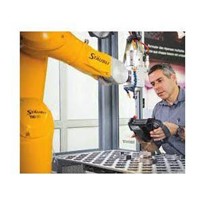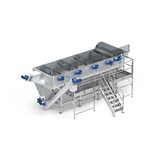Two-legged robots – also known as androids – took quite a while to appear because simulating human locomotion is so difficult. The human body constantly adjusts its centre of gravity parallel to the changes in its point of support and subject to many other factors. It’s an enormous challenge for researchers and inventors.
Robots that stand on two legs are fundamentally unstable. The reason is that the body’s centre of gravity lies at waist height and the contact surface of the feet on the ground is relatively small. Even tiny external disturbances like non-level ground surfaces can cause a robot to fall over. That these challenges can be overcome, however, is shown by the following examples:
The android Albert Hubo can walk, speak, recognise people and even alter his expression. A special material that comes from Hollywood studios and is named “Frubber” enables it to imitate humans.
Albert Hubo has a wide envelope of motion (66 degrees of freedom in its active joints), is 137 cm tall, weighs 57 kilos, is completely battery powered and is designed as an entertainment medium and for assistance in retirement homes.
Numerous electric motors are used for the facial and body movements. In the face alone, there are 28, which can give the impression of happiness, sadness, anger, surprise, etc.
The smooth body movements come courtesy of the brushed and brushless DC motors from maxon.
14 drives are employed for the arms, the hands require 10 units, the waist one and the legs another 10.
The precision motors have diameters of from 10 to 40 mm. Smaller ones are found, for example, in the fingers while larger ones power the legs.
Significantly smaller and lighter than Albert Hubo is Nao, a toy robot from the French robot manufacturer Aldebaran Robotics. Nao was introduced in 2006 and since August 2007 has been the official successor to the Sony Aibos as the standard platform for the RoboCup.
The RoboCup is the most important competition in the field of artificial intelligence and robotics. The ambitious goal of this annual world championship, which was founded in 1997, is to field a team of autonomous humanoid soccer playing robots that by 2050 will defeat the winner of the most recent FIFA World Cup.
Until things progress that far, a RoboCup is staged each year on a different continent, and more than 370 teams from 35 countries take part.
The small but quick Nao stands 58 cm tall, weighs 4.3 kilos and possesses 25 movable joints all driven by maxon DC motors.
Ultrasound sensors control orientation, and multiple microphones and loudspeakers even enable Nao to communicate with its environment. The little wonder is to be employed in the future not only for research purposes but as a toy or a household helper.


